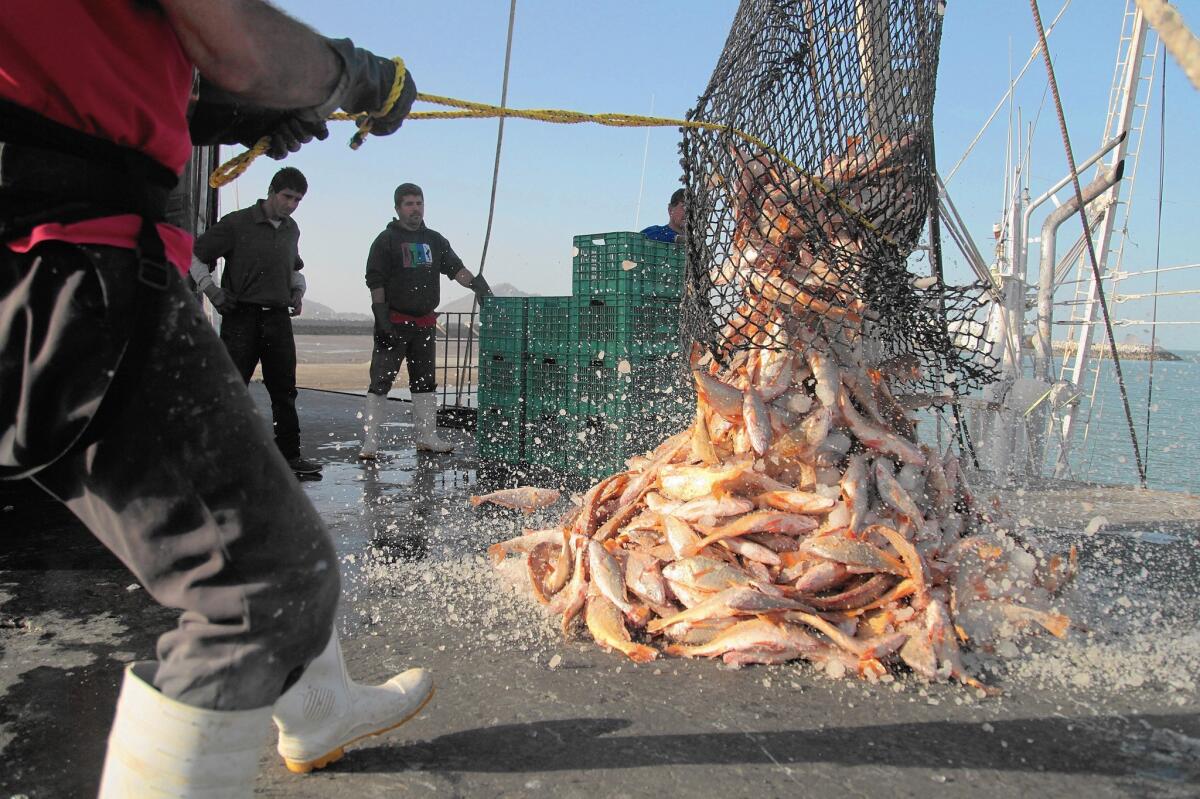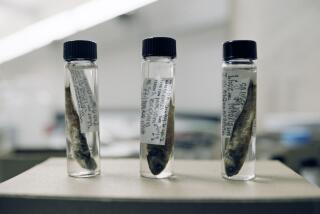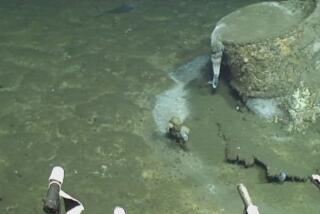Mercury, DDT and other contaminants in fish are at a four-decade low

- Share via
Fish in today’s oceans contain far lower levels of mercury, DDT and other toxic substances than at any time in the last four decades, according to a major review by scientists at the Scripps Institution of Oceanography in La Jolla.
The researchers looked at nearly 2,700 studies of pollutants found in fish samples taken from around the world between 1969 and 2012.
They saw steady, significant drops in the concentrations of a wide range of contaminants known to accumulate in fish — from about 50% for mercury to more than 90% for polychlorinated biphenyls, or PCBs.
At high enough concentrations, these toxic substances can cause cancer, neurological disorders, birth defects, thyroid problems and other ailments in people who consume tainted fish.
Echoing what marine experts have said over the years, the Scripps scientists concluded that clean-water regulations, lawsuits and other forms of public pressure have led to bans or sharp reductions in the use of industrial and agricultural contaminants that end up in creeks, rivers and oceans.
But they tempered their findings with a sobering reminder: Many fish in the wild still have pollutants at levels considered unsafe for frequent human consumption.
What’s more, contaminated fish weren’t necessarily the larger ones toward the top of the food chain, which are generally believed to accumulate more toxic substances than smaller fish. Some mackerel and sardines, for instance, had far greater pollution than some swordfish and shark.
The researchers also found no distinct pattern linking the region where fish were harvested and their degree of contamination. Even within a school of fish caught in the same location, the degree of contamination can vary greatly from one individual fish to another.
“There’s just a lot more complexity out there,” said Stuart Sandin, a marine biologist at Scripps and senior author of the study, published last month in the journal PeerJ.
To further complicate matters, today’s increasingly international seafood market means that U.S. stores typically sell fish shipped from Southeast Asia, South America and elsewhere.
The report focused on five contaminants or classes of contaminants that are widespread in the oceans: chlordane, DDT, mercury, PCBs and polybrominated diphenyl ethers, or PBDEs.
Sandin and his colleagues didn’t try to assess the health effects of these chemicals. Instead, they sought to identify geographic and other patterns in the chemical contamination of fish worldwide.
Their analysis showed that on average, pollutant concentrations now meet federal safety guidelines in the United States for occasional fish consumption — two or three servings per week, based on various marine groups’ standards. For example, mercury and PCBs were found at levels acceptable for occasional human consumption and DDT was consistently below the established threshold for concern.
Still, with millions of people worldwide relying on fish as their main source of protein, the threat of contamination continues to loom large.
“We label a lot of things like whether it’s sustainable or whether it’s wild-caught or farmed, but one of the things that we still haven’t figured out how to do is to address whether it’s contaminated or not,” said Amro Hamdoun, who studies ecological developmental biology at Scripps and was a co-author of the new report. “I think that’s something most people want to know.”
Attempts to track contamination by species, geographic region and other factors revealed a complex set of circumstances that researchers have yet to fully understand.
“The pollution does not stay in one place,” Sandin said. “We thought that we would find something like that. But when you start increasing the scale, that predictability goes away. We didn’t find any evidence that when you’re near shore versus 100 miles offshore that you had more or less chemicals in the seafood.”
Rita Kampalath, science and policy director for the environmental group Heal the Bay, said the results were welcome but not particularly surprising.
“I would hope that they would drop since many of these contaminants haven’t been produced for a long time,” she said.
Joshua Emerson Smith writes for the San Diego Union-Tribune.






